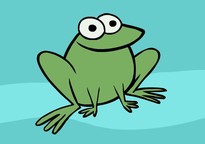Time is a challenging concept for young children to understand. You can introduce it to them in a variety of concrete, creative ways. Did something take a very, very long time or did it happen very quickly? How can you describe it? Try using your hands and arms to measure the length of time, holding your arms out as far as you can to describe a long time and just using your forefinger and thumb to describe a short time. How would you show a time that is somewhere in the middle?
Another good way to measure time is by using a kitchen timer. Talk about a short amount of time, like five minutes. Set the timer for five minutes and then do a short activity, like brushing teeth and putting on pajamas before bedtime. When the timer goes off, discuss how long it took to get ready for bed. On another day, set the timer for a longer period of time, like ten or fifteen minutes. Do a longer activity, such as reading a bedtime story. When the timer goes off, talk with your child about how long it took to read the story and then compare it to the activity that you had done for five minutes. Kids can also measure seconds for games like Hide and Seek by counting "1 Mississippi, 2 Mississippi..."
Keep experimenting with the kitchen timer. Invite your child to set the timer for different amounts of time. Talk about how long the timer was set for and then listen for it to go off. Was it a short time or a long time? You can also use the timer to signal different events in the day. When the timer goes off, you can go for a walk or eat dinner. Did it seem like a long time or a short time?

 Español
Español









